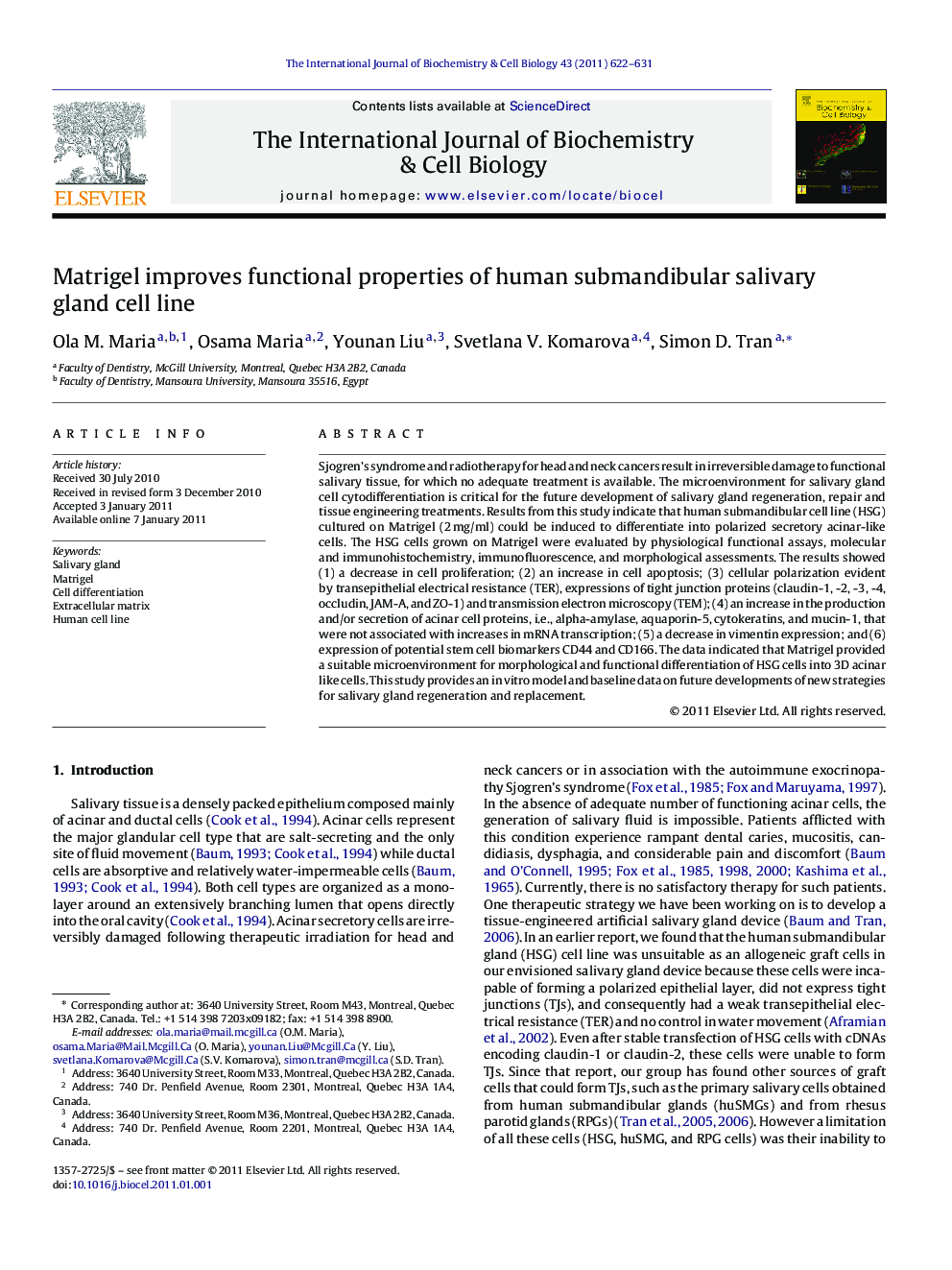| Article ID | Journal | Published Year | Pages | File Type |
|---|---|---|---|---|
| 1984134 | The International Journal of Biochemistry & Cell Biology | 2011 | 10 Pages |
Abstract
Sjogren's syndrome and radiotherapy for head and neck cancers result in irreversible damage to functional salivary tissue, for which no adequate treatment is available. The microenvironment for salivary gland cell cytodifferentiation is critical for the future development of salivary gland regeneration, repair and tissue engineering treatments. Results from this study indicate that human submandibular cell line (HSG) cultured on Matrigel (2Â mg/ml) could be induced to differentiate into polarized secretory acinar-like cells. The HSG cells grown on Matrigel were evaluated by physiological functional assays, molecular and immunohistochemistry, immunofluorescence, and morphological assessments. The results showed (1) a decrease in cell proliferation; (2) an increase in cell apoptosis; (3) cellular polarization evident by transepithelial electrical resistance (TER), expressions of tight junction proteins (claudin-1, -2, -3, -4, occludin, JAM-A, and ZO-1) and transmission electron microscopy (TEM); (4) an increase in the production and/or secretion of acinar cell proteins, i.e., alpha-amylase, aquaporin-5, cytokeratins, and mucin-1, that were not associated with increases in mRNA transcription; (5) a decrease in vimentin expression; and (6) expression of potential stem cell biomarkers CD44 and CD166. The data indicated that Matrigel provided a suitable microenvironment for morphological and functional differentiation of HSG cells into 3D acinar like cells. This study provides an in vitro model and baseline data on future developments of new strategies for salivary gland regeneration and replacement.
Related Topics
Life Sciences
Biochemistry, Genetics and Molecular Biology
Biochemistry
Authors
Ola M. Maria, Osama Maria, Younan Liu, Svetlana V. Komarova, Simon D. Tran,
